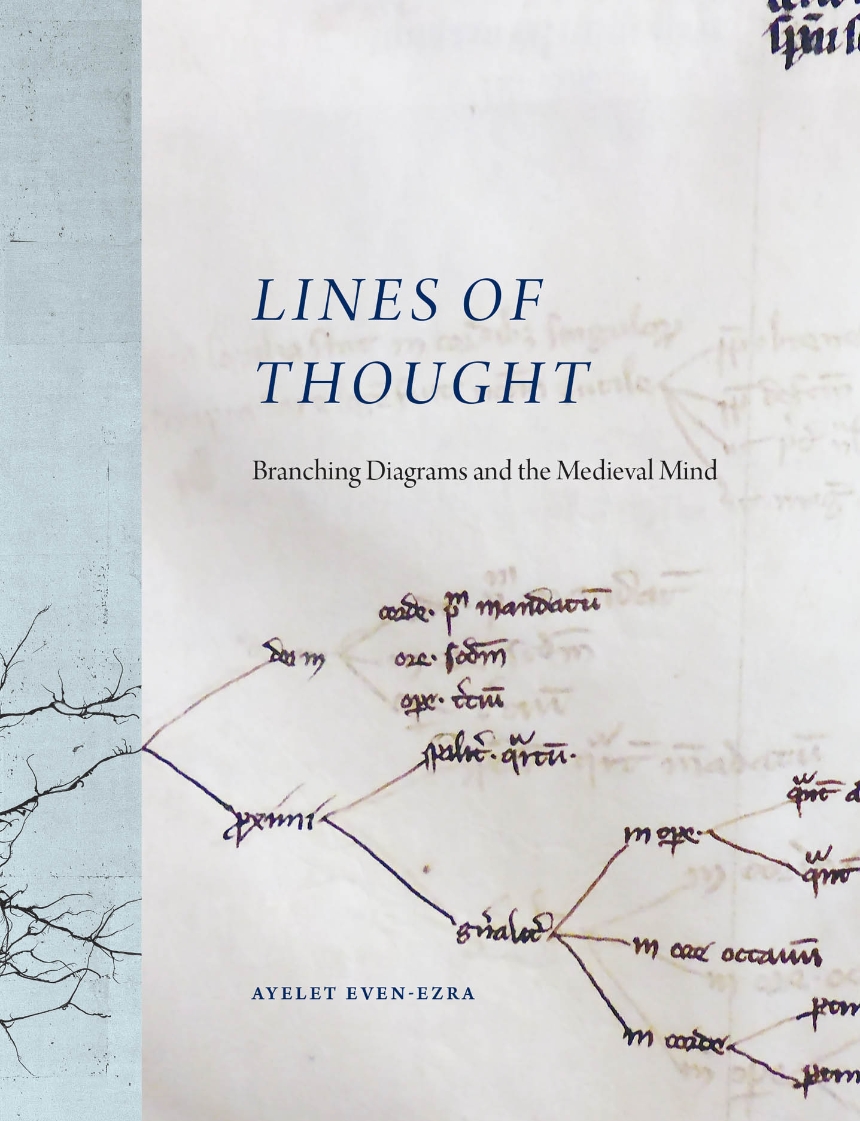Lines of Thought
Branching Diagrams and the Medieval Mind
We think with objects—we conduct our lives surrounded by external devices that help us recall information, calculate, plan, design, make decisions, articulate ideas, and organize the chaos that fills our heads. Medieval scholars learned to think with their pages in a peculiar way: drawing hundreds of tree diagrams. Lines of Thought is the first book to investigate this prevalent but poorly studied notational habit, analyzing the practice from linguistic and cognitive perspectives and studying its application across theology, philosophy, law, and medicine.
These diagrams not only allow a glimpse into the thinking practices of the past but also constitute a chapter in the history of how people learned to rely on external devices—from stone to parchment to slide rules to smartphones—for recording, storing, and processing information. Beautifully illustrated throughout with previously unstudied and unedited diagrams, Lines of Thought is a historical overview of an important cognitive habit, providing a new window into the world of medieval scholars and their patterns of thinking.
These diagrams not only allow a glimpse into the thinking practices of the past but also constitute a chapter in the history of how people learned to rely on external devices—from stone to parchment to slide rules to smartphones—for recording, storing, and processing information. Beautifully illustrated throughout with previously unstudied and unedited diagrams, Lines of Thought is a historical overview of an important cognitive habit, providing a new window into the world of medieval scholars and their patterns of thinking.
272 pages | 4 color plates, 27 halftones, 86 line drawings, 3 tables | 8-1/4 x 11 | © 2021
History: History of Ideas
Literature and Literary Criticism: General Criticism and Critical Theory
Reviews
Table of Contents
Introduction
Part I
1 The Form: Chronological, Linguistic, and Cognitive Perspectives
2 The Habit: On What, Where, Who, When, and How Often
Part II
3 Structures of Concepts: Distinctions
4 Structures of Language
5 Structure of Texts
Appendix: Latin and English Surface Text of the Book of Job Parsed and Numbered (Translation Follows the English Standard Version)
Epilogue
Acknowledgments
Notes
Bibliography
Index
Part I
1 The Form: Chronological, Linguistic, and Cognitive Perspectives
1.1 Form: A Chronological Perspective
1.2 Form: A Linguistic Perspective
1.3 Form: A Cognitive Perspective
1.2 Form: A Linguistic Perspective
1.3 Form: A Cognitive Perspective
2 The Habit: On What, Where, Who, When, and How Often
2.1 Diagramming as a Form of Marginal Annotation
2.2 Parasitic, Embedded, and Tapestry Forms
2.3 Beyond the Classroom: French and Hebrew
2.4 Conclusion
2.2 Parasitic, Embedded, and Tapestry Forms
2.3 Beyond the Classroom: French and Hebrew
2.4 Conclusion
Part II
3 Structures of Concepts: Distinctions
3.1 Natural Philosophy, Metaphysics, Ethics
3.2 Biblical Distinctions
3.3 Canon and Civil Law
3.4 Medicine
3.5 Conclusion
3.2 Biblical Distinctions
3.3 Canon and Civil Law
3.4 Medicine
3.5 Conclusion
4 Structures of Language
4.1 Verse and Rhyme
4.2 Letter Writing (Ars Dictaminis)
4.3 Grammar
4.2 Letter Writing (Ars Dictaminis)
4.3 Grammar
5 Structure of Texts
5.1 Orientation and Composition: Theological Questions
5.2 Analysis: Argument
5.3 Analysis: Biblical Narrative
5.4 What HT Diagramming Tells Us about the Scholastic Perception of Texts: Authors as Architects, Texts as Wisely Made Constructions
5.5 Coda: Back to the Future—Parallels to the Divisio Textus in Twentieth-Century Narrative Analyses
5.2 Analysis: Argument
5.3 Analysis: Biblical Narrative
5.4 What HT Diagramming Tells Us about the Scholastic Perception of Texts: Authors as Architects, Texts as Wisely Made Constructions
5.5 Coda: Back to the Future—Parallels to the Divisio Textus in Twentieth-Century Narrative Analyses
Appendix: Latin and English Surface Text of the Book of Job Parsed and Numbered (Translation Follows the English Standard Version)
Epilogue
Acknowledgments
Notes
Bibliography
Index
